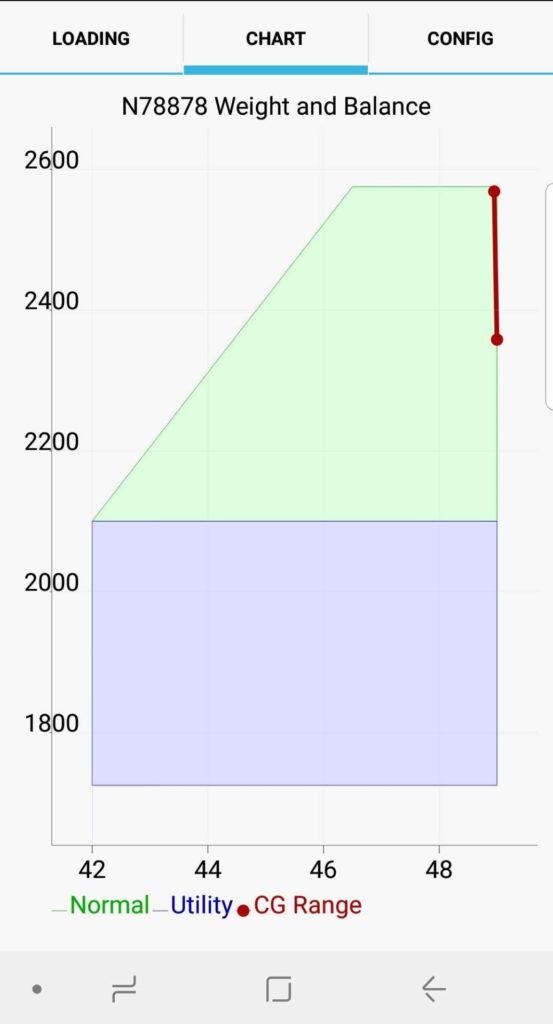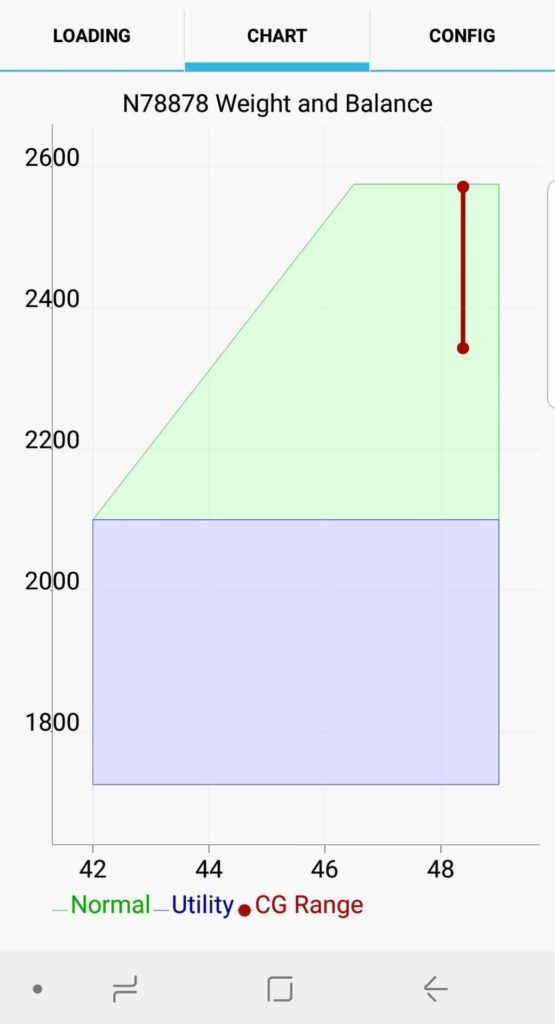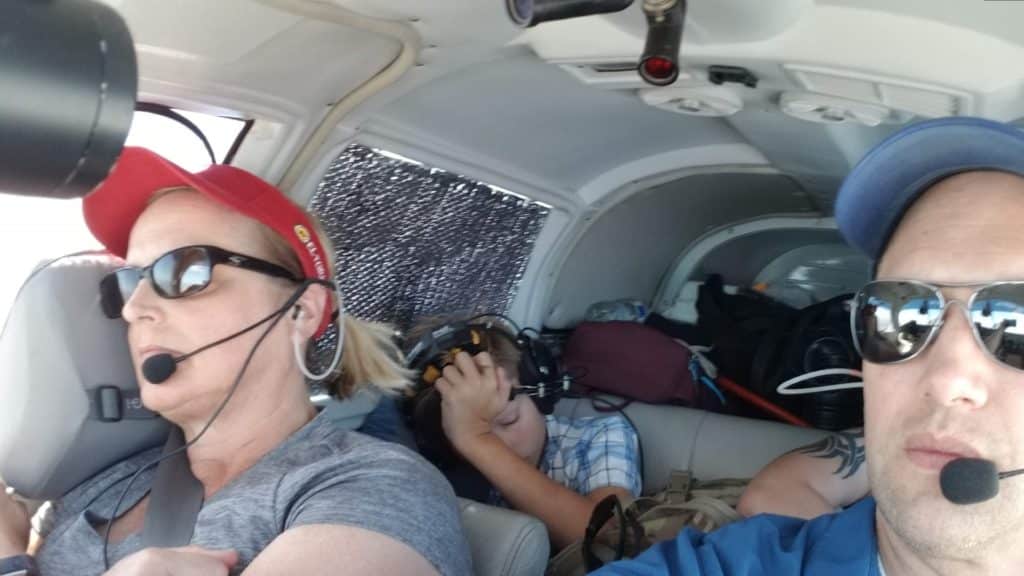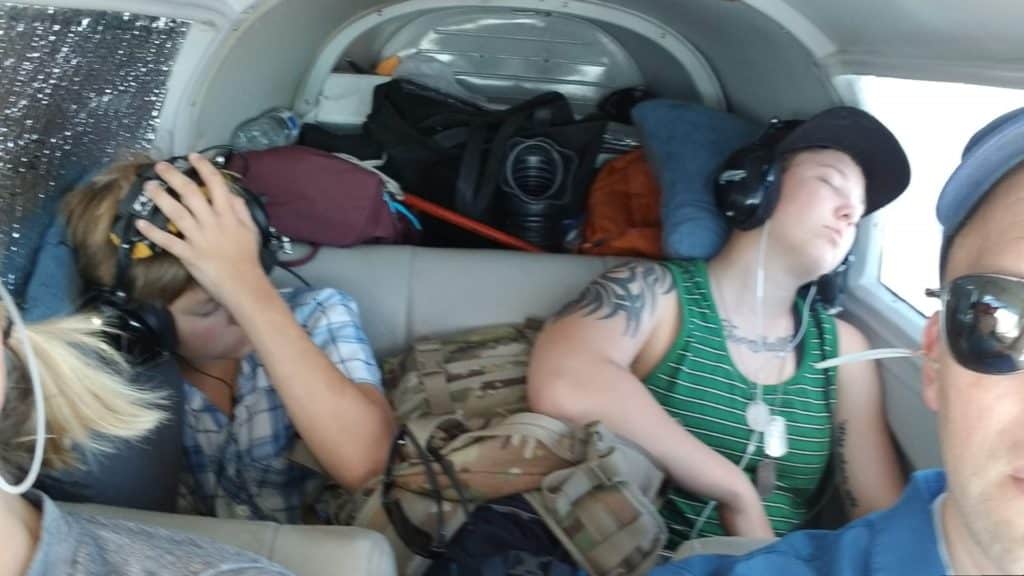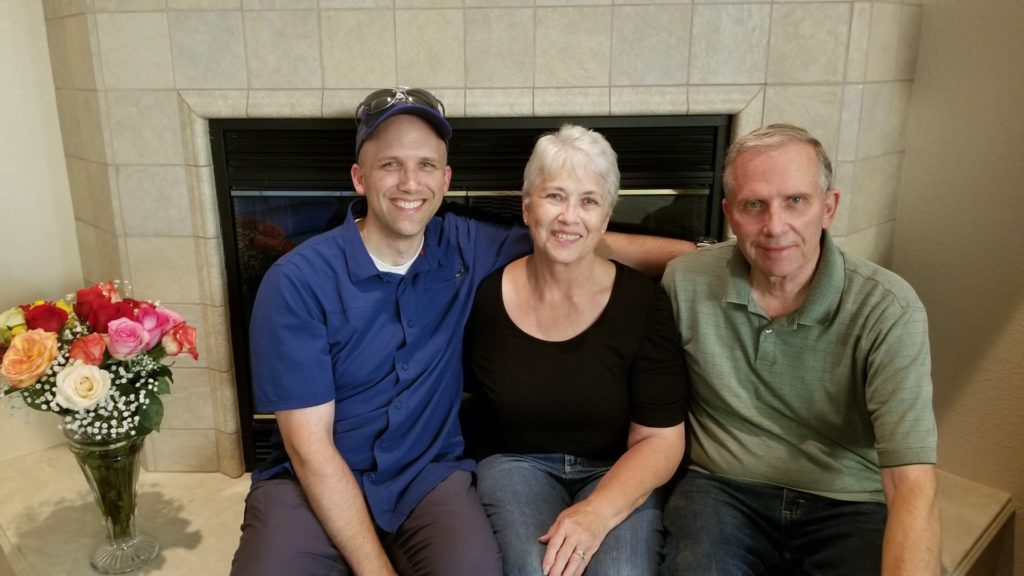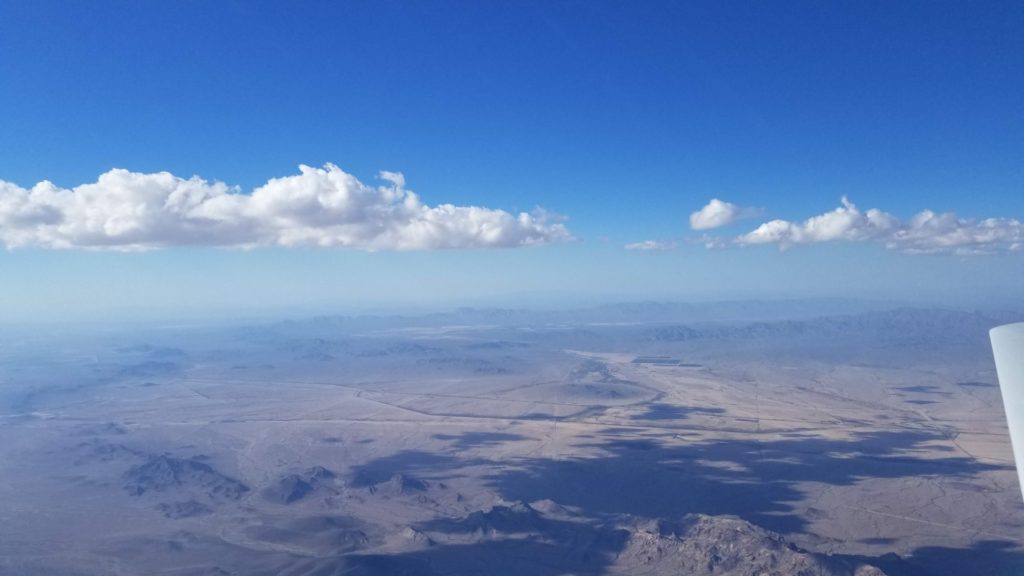Phoenix in the summer requires air conditioning. Air conditioning is extra weight, and when that is combined with all four seats being filled it can require getting a little creative with the weight and balance.
For those that don’t know what weight and balance is, it requires making sure that the plane isn’t too heavy to fly as well as making sure that the weight is distributed so that the plane is stable in flight. Think of the old seesaws that used to be on every playground. If the kids on each end were close to the same weight then it was easy to just go up and down. If one was heavier than the other it took more effort to get the heavier one up. Sometimes moving the heavier one closer to the center and the lighter one further to the end would make it work better. However there came a point where if the difference was too great you just couldn’t get the heavier kid up in the air.
With a small plane if it is too heavy you aren’t getting off the ground, or if you do you aren’t going to stay in the air. The closer you get to the front and aft limits of the center of gravity for that specific plane the less stable it becomes. With an aft center of gravity it increases your cruise speed (a good thing) but also decreases the stall speed and stall/spin recovery becomes more difficult.
On most flights I know that I will be within limits because I know what the weight and balance is with my typical passengers of my wife and youngest son along with bags. For this flight I had the scale there at the hangar and had everyone get on it as well as weighing each bag that would be going in the plane.
We wouldn’t be able to take full fuel to stay under gross weight but that was okay as it was only going to be about a 2:20 flight. The problem was with the air conditioner (cooler, 4 liters of water, 20lbs of ice) in the baggage area, if we put all the bags back there too we would be right at the aft CG. While that is “legal” I prefer not to fly with it there. In the back of my mind was the recent crash of a Mooney that claimed the life of the pilot and injured the two passengers. While the results have not been determined it is thought that an aft CG might have played a part in the plane crashing after an attempted go-around.
I played around with the putting different bags in different places and found that if we put my wife’s small bag on the floor right in front of her seat (under her legs) and then put the two heaviest bags in the back seat between my kids that it would move the CG forward a bit away from the aft limit.
- Before Redistribution
- After luggage redistribution
Everyone piled into the plane with the kids squeezing into the back seat and finding their seat belts. Because of my daughter’s schedule we couldn’t leave until early afternoon and it was hot, but the AC was blowing cold air and kept it comfortable. After taxiing and the run-up we rolled onto runway 25 and began lumbering along. It takes a bit more runway to get off the ground when you are a few pounds under gross, and you don’t climb very fast when you finally leave the ground, in fact if you try to you risk a stall. We broke free from the ground, the gear came up, and we started climbing out into the gusty winds.
- Quickest way to get there is to take a nap
- Packed in the back seat
The flight briefing did not indicate that there would be any low level turbulence, but it was a summer afternoon over the desert and it was anything but smooth. As we flew past Palm Springs and Indio Air Traffic Control gave multiple warnings to planes about multiple gliders in the area. The entire flight (with the exception of about 10 minutes east of Blythe) would be trying to stay somewhat close to my cruising altitude of 7,500′ as the air currents took us up and down.
The VFR (Day) minimum is to have enough fuel to get to your first point of intended landing and assuming normal cruise speed continue to fly at least another 30 minutes past that. My personal minimum is an hour of reserve fuel which means 10 gallons of usable fuel. I also want to have all that fuel in one wing because having 5 gallons in each wing is not the same as 10 gallons in one wing. We took off on the left tank (fullest) and then once in cruise switched to the right and would run it until it was empty. I have run a tank dry before and it is a non-event, although there are different definitions of a “non-event.” If you watch the fuel flow and the pressure gauge you can see when the tank runs dry and switch to the other tank before the engine stops (a true non-event). If you don’t notice when the flow and pressure are dropping the engine quits, you switch tanks, a few seconds later it comes back to life, and you continue on your way (still a non-event but there is a little more “event” involved for your passengers). For the engine to run it needs air, fuel, and spark. As long as the prop is turning you have the air and spark so once you switch tanks and provide fuel again it comes right back.
With my engine monitor I knew about when it should run dry and had been watching, but apparently not close enough because suddenly the engine quit. I have run a tank all the way empty to the point of the engine stopping before so I knew exactly how it would act, but that was solo. I had told them that we would be running the tank dry because you never want to surprise your passengers with anything, so when the engine stopped I said “There it is,” reached down and switched the tank, and a couple long seconds later the engine came right back to life.
We were glad to have the AC for the entire flight as it was still 75-77 degrees even up at 7,500′ and when we landed at Chandler the ATIS was reporting 36 degrees C (97F) but I was more inclined to believe the temperature gauge in my sister’s car when she picked us up that said it was 108° F outside. I knew I wasn’t going to want to fuel up before the flight home so I pulled up to the pumps and while my wife and kids headed to the air conditioning in the terminal I sweated it out putting fuel into the plane. (Small price to pay to be able to fly your own plane to visit family).
We had a great time visiting everyone and celebrating my parents 50th Wedding Anniversary.
Sunday afternoon we headed back to the airport with 20 lbs of ice for the cooler and 104°F showing on the car (at least it was cooler than Saturday…) With pre-flight completed outside the plane we got in and left the sunshades in place while I finished up in the plane going through the pre-start checklist right up until it was time to start the engine and then pulled them from the front so I could ensure the prop was clear before cranking it. As soon as the engine caught we turned on the AC and enjoyed the cool air from it.
As hot as it was the climb to 10,500′ was a slow one but worth it once we got there. It was cool enough that I unplugged the AC to save some of the ice for our arrival back into Corona.
I had filled the left tank and put 10 gallons in the right with the plan to take off and climb on the left, switch to the right for cruise, then switch back to the left after running the right dry for the remainder of the flight. I was about to learn a lesson about running a tank completely dry. once we were in cruise I switched over to the right tank and as I always do kept an eye on the fuel flow and pressure after switching to make sure everything was working correctly. Much to my dismay the fuel flow and pressure both steadily dropped as soon as I switched tanks. I immediately switched back to the left tank and the fuel flow and pressure came back up to normal.
I thought about it for a few seconds… We weren’t in any trouble if the right tank wasn’t working, it just meant that we would have to stop somewhere in route for fuel. What was going on with the fuel from the right side? I decided to switch back to the right tank again to see if it had the same result. This time the fuel flow and pressure held steady so I stayed on the right tank. Thinking about it I realized what had happened. When I ran it all the way dry to the point of the engine dying it left air in the fuel line. I had done that before but started on the right tank the next time I flew so never experienced the air in the line because by the time I got the engine to start the line had fuel in it again. This time I hadn’t spent any time on the right tank after running it dry until I switched over in flight. The few seconds I had it on the right tank while the pressure was dropping it was actually priming the line and when I switched back to it the second time it went smooth.
It was a much smoother ride back at 10,500′ than there at 7,500′. When we were handed off to SoCal Approach just East of Palm Springs they instructed me to inform them prior to any altitude changes. Coming down from 10,500′ it wasn’t long before I wanted to begin our descent. We were initially held but then given clearance to descend. As we approached the Banning Pass we were given some more instruction.
SoCal: “November 78878, are you familiar with the 10 freeway?”
Me: “Affirmative”
SoCal: “I need you to stay as far North of the 10 freeway as possible for parachute activities and the Banning Airport.”
Me: “Roger, will remain north of the 10.”
We made a turn to the north and angled towards the mountains until we were a few miles north of the freeway and then continued to the west. As usual we were restricted at or above 4,500′ until were were west of March’s airspace at which point we could continue our descent.
It was quiet in the pattern at Corona as we approached from the south the enter a left downwind for runway 25. A couple miles from the airport another plane came on the frequency 10 miles to the east and descending through 4,000′. I thought perhaps he was trying to make a straight in approach which wouldn’t cause any conflicts but he called out that he was going to overfly at 2,000′ (Traffic Pattern is at 1,533′) and then enter the standard left downwind. Before he was even over the airport we were exiting the runway and taxiing back to the hangar.

